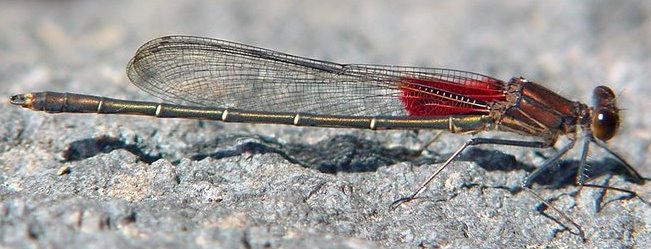Female Stylurus Scudderi Zebra Clubtail 8-8-2009 Athol Ma
 The 30 X 40 foot backyard pond we constructed this spring is such a blast to explore it is almost beyond words.. Yesterday was no exception. Returning from a wonderful day of learning about bees and Pollinators with friends Joan Milam and Eric Eaton at the Mount Grace Land Conservation Trust Headquarters, I was showing off my little wet part of the world when a teneral dragonfly leaped into flight and immediately crash landed into the pool... The hapless insect was valiantly stroking its way across the pool as I ran for my handy insect net and I was able to let the dragonfly crawl up on the nets ring and bring it to safety...
The 30 X 40 foot backyard pond we constructed this spring is such a blast to explore it is almost beyond words.. Yesterday was no exception. Returning from a wonderful day of learning about bees and Pollinators with friends Joan Milam and Eric Eaton at the Mount Grace Land Conservation Trust Headquarters, I was showing off my little wet part of the world when a teneral dragonfly leaped into flight and immediately crash landed into the pool... The hapless insect was valiantly stroking its way across the pool as I ran for my handy insect net and I was able to let the dragonfly crawl up on the nets ring and bring it to safety...

 The 30 X 40 foot backyard pond we constructed this spring is such a blast to explore it is almost beyond words.. Yesterday was no exception. Returning from a wonderful day of learning about bees and Pollinators with friends Joan Milam and Eric Eaton at the Mount Grace Land Conservation Trust Headquarters, I was showing off my little wet part of the world when a teneral dragonfly leaped into flight and immediately crash landed into the pool... The hapless insect was valiantly stroking its way across the pool as I ran for my handy insect net and I was able to let the dragonfly crawl up on the nets ring and bring it to safety...
The 30 X 40 foot backyard pond we constructed this spring is such a blast to explore it is almost beyond words.. Yesterday was no exception. Returning from a wonderful day of learning about bees and Pollinators with friends Joan Milam and Eric Eaton at the Mount Grace Land Conservation Trust Headquarters, I was showing off my little wet part of the world when a teneral dragonfly leaped into flight and immediately crash landed into the pool... The hapless insect was valiantly stroking its way across the pool as I ran for my handy insect net and I was able to let the dragonfly crawl up on the nets ring and bring it to safety... In the excitement I hadn't processed the distinctive markings on the thorax or brown abdomen with yellow rings.. I was focused on the rescue... In the back of my mind I was hoping for some rare elusive emerald or other oddity...
When I finally had the little beast in hand it became obvious I was looking at a Gomphid, eyes apart and distinctive thoracic pattern. The ringed abdomen quickly brought me to the identification of Zebra Clubtail Stylurus scudderi. This species is currently listed and protected by the Ma Natural Heritage and Endangered Species Program. I called Friend and Athol Resident Lynn Harper who is the Heritage Odonate person and she came right over and viewed our drying out specimen... The record will be included in the Heritage database and be just another piece in the puzzle of as we unravel the life histories of these insects.
In Blair Nikula's fine field guide to Dragonflies and Damselflies of Massachusetts he describes scudderi habitat as: "Sand bottomed streams and small rivers with riffles". This is hardly a description of our little pool.
We are uphill (more than 2500 feet) from of a stream which has a potential habitat for this species but I've not found it there as yet... I may look this afternoon. The elevation of our home at 885 feet does bring Hill-topping behavior as a potential answer to my question...
No matter how it got here we are happy to add this species to our growing yard list.
I wonder what we'll discover today?
dave@dhsmall.net
http://dhsmall.blogspot.com/
.jpg)

Ah, Dave, the cool bugs will always seek you out!
ReplyDelete